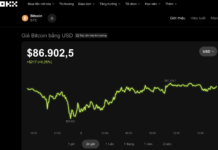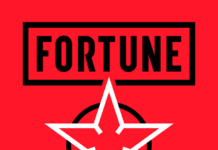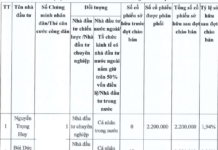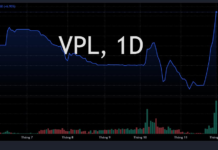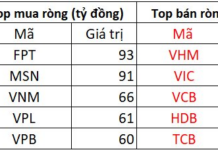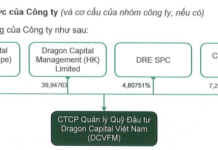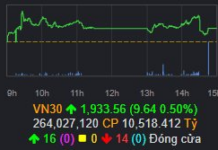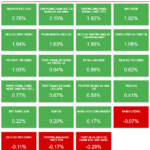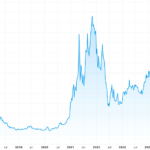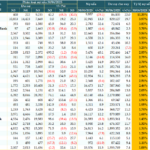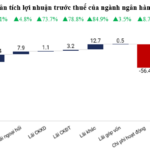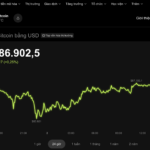According to CNN, the dark trading session on Thursday (October 16, 2025) delivered a severe blow to Wall Street, as concerns over credit risk and fraud began to spread from the market’s shadowy corners to regional banks.
News that Zions Bancorp would incur a loss of approximately $50–60 million due to two loans with borrowers accused of misrepresentation, fraud, and contract violations sent shockwaves through the market.
Adding to the turmoil, Western Alliance Bank announced it was suing a borrower for alleged fraud.
These developments followed the bankruptcies of subprime auto lender Tricolor Holdings and parts supplier First Brands, prompting Wall Street to reevaluate the credit system.
The widespread decline in U.S. stock indices, led by the financial sector, suggests that initial bankruptcies like Tricolor Holdings and First Brands are not isolated incidents but warning signs of deeper systemic issues.
“The market initially reacted as if everything would be fine (after First Brands’ bankruptcy), but I’m not so sure,” CEO Dimon remarked, recalling JPMorgan Chase’s rescue of Bear Stearns during the 2008 crisis.

Cracks in the Foundation
The bankruptcies of Tricolor Holdings and First Brands, initially perceived as confined to the auto industry, are revealing far-reaching implications. Both cases expose a troubling reality: the U.S. credit system harbors “dark corners” in lending quality, while the financial market remains complacent after two years of sustained growth.
Tricolor Holdings, a Dallas-based subprime auto lender, collapsed in September as numerous customers defaulted amid record-high car prices and soaring living costs.
Even JPMorgan Chase, America’s largest bank, acknowledged a $170 million loss tied to Tricolor’s loans—a modest sum for JPMorgan’s financial fortress but enough to alarm investors.
Just weeks later, First Brands, a private auto parts supplier, filed for bankruptcy due to opaque financial structures.
Investigators discovered the company used “off-balance-sheet lending” to conceal debt, even reusing the same invoice to borrow from multiple creditors. The U.S. Department of Justice has launched a criminal investigation, leaving creditors at risk of losing billions.
These consecutive events evoke the early days of the 2008 crisis, when the collapse of Bear Stearns was initially downplayed until the entire U.S. financial system trembled.
The financial market reacted swiftly. On Thursday alone, U.S. stocks plunged: the Dow Jones lost over 300 points, the S&P 500 fell 0.63%, and the Nasdaq dropped nearly half a percent. Regional banks, the lifeblood of domestic credit, were hit hardest.
Zions Bancorp plummeted 13% after announcing a $50 million loss from bad loans, while Western Alliance Bancorp fell nearly 11% after revealing its fraud lawsuit against a borrower.

Jefferies, another major investment bank, saw its shares drop over 10% due to exposure to First Brands, its steepest decline since April. The KBW Nasdaq Regional Banking Index fell more than 6%, marking one of its worst sessions since spring.
Panic gripped Wall Street. The VIX volatility index, dubbed the “fear gauge,” surged over 22%, while CNN’s Fear & Greed Index entered “extreme fear” territory for the first time since April. Investors fled to safe havens: gold hit $4,300 per ounce, and Treasury yields fell as capital exited stocks.
More Cockroaches in the Shadows
Amid these developments, Jamie Dimon, JPMorgan Chase’s CEO and a key figure in the 2008 Bear Stearns rescue, issued a warning. He suggested that incidents like Tricolor and First Brands may be the “first signs” of a larger credit issue lurking beneath the surface.
“I probably shouldn’t say this, but if you see one cockroach, there are probably more behind… People should be cautious,” Dimon warned during an analyst meeting.
He emphasized that asset prices are excessively high, credit spreads are too narrow, and if the U.S. economy enters a recession, “there will be many troubled loans.”
Dimon’s warning serves as a stark alarm. He doesn’t predict an imminent collapse but implies that complacency is making the financial system increasingly vulnerable.
The parallels with 2008 are unmistakable. Then, the crisis began with subprime mortgages, complex financial instruments, and opaque reporting by major institutions.
Today, a similar pattern emerges with private corporate loans, auto credit, and the rapidly growing but lightly regulated private credit sector.
While experts argue the current situation isn’t systemic, recent events indicate that credit risk has left the safety zone. When the economy slows, businesses “swimming naked,” as Warren Buffett puts it, will be exposed.
“You never know who’s swimming naked until the tide goes out,” Buffett said.
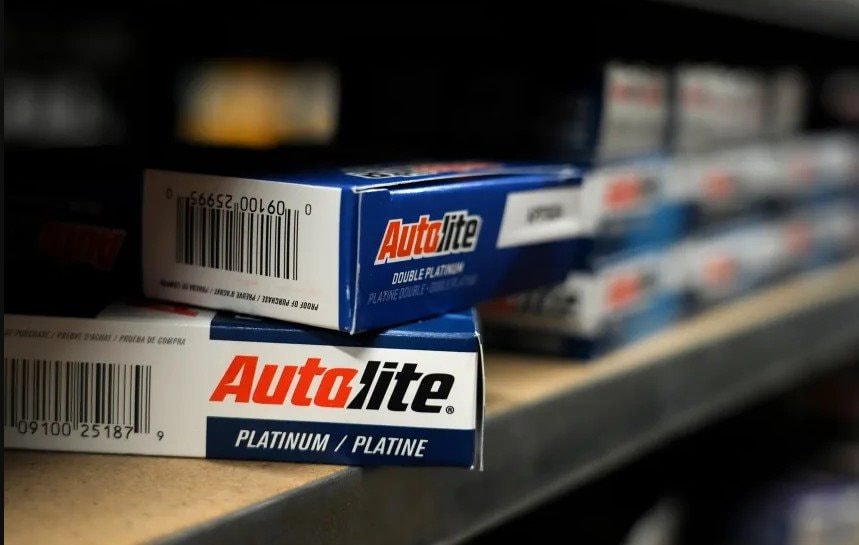
According to CNN, the current situation isn’t a crisis—at least not yet. However, the panic among regional banks, the market’s extreme reaction, and warnings from figures like Jamie Dimon highlight the fragility of the U.S. financial system after years of overheated growth.
If Tricolor and First Brands are just the beginning, Wall Street may brace for another painful reckoning, reminiscent of 2008, when the true extent of the problem became apparent far too late.
Sources: CNN, Fortune, BI
Market Beat: The Triumphant Trio Revives, VN-Index Rallies in the Afternoon
The Vietnamese stock market indices witnessed a remarkable turnaround on Thursday, September 4th. After a challenging morning session, the VN-Index surged in the afternoon, closing at 1,696.29, a gain of nearly 15 points. The HNX-Index and UPCoM-Index mirrored this positive sentiment, with the former climbing 1.29 points to 283.99 and the latter rising 0.8 points to finish at 111.85. This unexpected rally has injected a dose of optimism into the market, setting the stage for a potential upward trajectory in the coming sessions.
“Vietnam’s Economic Outlook: Positive Trajectory Ahead, Yet Credit Quality Requires Vigilant Management”
The economic outlook for Vietnam is positive, according to both domestic and foreign experts, with a stable BB+ credit rating maintained. However, three significant challenges remain: dependence on the US and Chinese markets, a lagging logistics system, and a credit-to-GDP ratio that has climbed to 135%, nearly double the international average.
“The Rise of Non-Performing Loans Stalls, Many Banks Improve Loan Quality”
The silver lining in the cloud of non-performing loans is that the upward trajectory of total bad debt at the end of the second quarter showed signs of abating. This improvement can be attributed to a combination of factors: prudent monetary policies, a cautious approach to credit strategies, and the gradual recovery of the economy. As a result, many banks have successfully enhanced their loan quality and mitigated bad debt risks.
The Profit Picture: Unraveling the Complexities of Bank Groups’ Earnings
The Q2 report reveals a 17% growth in profits for commercial banks compared to the previous year. This is an encouraging figure, yet it masks a significant disparity in the performance of individual banks. A closer look at the numbers reveals a wide gap in provisioning policies, which warrants further investigation and raises several concerns.







